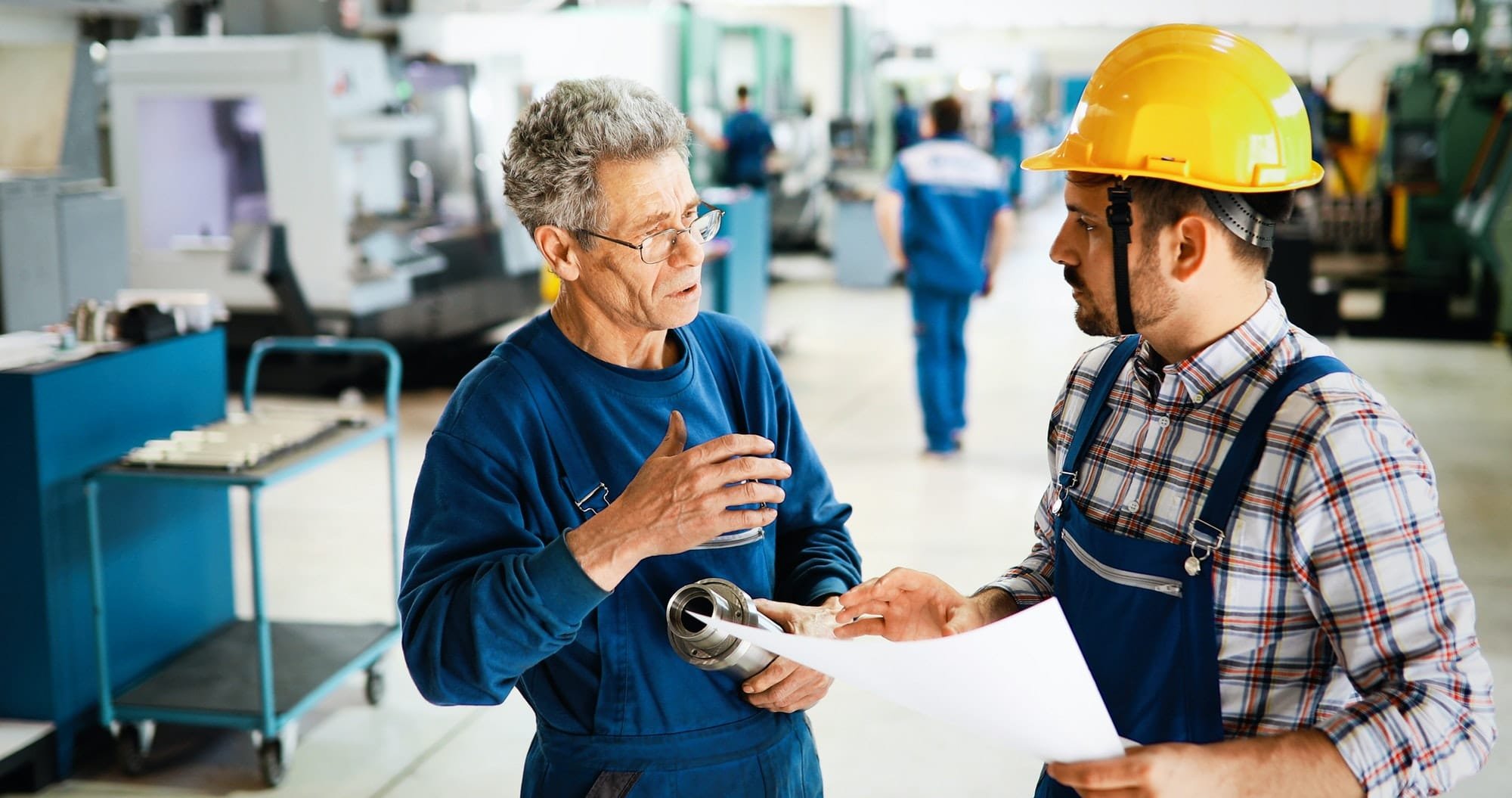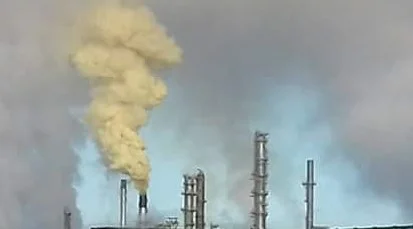Don’t forget about your liquid sulfur.
Upon production in the upstream Claus Condensers, liquid sulfur inevitably contains both dissolved H2S and conjugated polysulfides, H2Sx
Don’t Forget About Your Liquid Sulfur!
Upon production in the upstream Claus Condensers, liquid sulfur inevitably contains both dissolved H2S and conjugated polysulfides, H2Sx. Depending on the position of the specific Condenser in the process, the concentration of H2S bearing species in the liquid can range from 200 to 700 ppm. From a personnel safety perspective, direct exposure at these levels could be fatal!
From a product quality perspective, safety is also, obviously, the driver with respect to reliable liquid sulfur degassing operations. The presence of elevated H2S can create both a toxic and corrosive environment with respect to downstream product handling. Here, while the H2S content should be quite low, concentrated pockets can indeed develop in the sulfur holding tank and also pose a potentially serious risk to those loading trucks and rail cars. Most importantly, it should not be assumed that these individuals are experts in terms of mitigating the risks associated with H2S (i.e. knowledge of wind direction, body position, etc.)!
When an engineered degasification process is employed, the industry standard is for there to be less than 10 ppm H2S remaining in the liquid sulfur product. In the absence of any agitation, the final product should contain no more than 30 ppm. Here, these general expectations lead nicely into the following case study:
A gas processor in Western Canada, and regular SRE client, provides their liquid sulfur product to a nearby forming facility. The specific business arrangement is very simple: A processing/forming fee is charged back to the provider prior to marketing of the final, solid sulfur product. Considering the current market demand for sulfur, it is important that additional forming fees are not charged due to out-of-spec liquid sulfur.
This case study begins with the Gas Plant having received notice that liquid sulfur, recently received and subsequently sent out for analysis by the forming facility, contained elevated H2S. Furthermore, a nearby resident filed an odor complaint around the same time period. Here, SRE was contracted and immediately mobilized to begin troubleshooting this degassing issue starting the very next day!
SRE’s tailored, on-site liquid sulfur analysis provides fast and accurate results in terms of total H2S content in your liquid sulfur by utilizing a catalyst to quickly convert polysulfides back to H2S. Initial liquid sulfur samples, collected from the degassed portion of each sulfur pit, revealed that only one of the two pits (i.e. multiple sulfur trains on-site) was discharging out-of-spec liquid sulfur. Sulfur from the two pits is stored in common collection tanks, which were also determined to be out-of-spec and confirmed the results reported by the forming facility. Of important note, SRE conducted on-site liquid sulfur analyses for this same client just a year before and all results, at all locations, were well below 10 ppm.
From above, the key to this solving this problem was to determine the critical operating difference between the two degassing pits. In conjunction with SRE’s on-site liquid sulfur analyses and a formal review of previous operations (i.e. DCS data, Operator logs, etc.), the power of SRE’s proprietary Gas Chromatograph application provided the necessary insight into the issue and a path forward for the client.
With time, liquid sulfur will naturally degas. Agitation also plays a key role and works to speed up this process and, essentially, serve as a robust control to mitigate product quality-associated risks. As was previously mentioned, when an engineered degasification process is employed, the industry standard is for there to be less than 10 ppm H2S remaining in the liquid sulfur product. However, sweep air, across the top of the liquid surface in the degassing pit is required to achieve a reasonable level of H2S removal. It follows that a sweep air-related issue would negatively impact the overall the driving force, setup at the interface of the liquid sulfur level and pit’s vapor space. If we cannot remove the previously released H2S (by way of sweep air), then we can only remove so much from the liquid sulfur!
Vapor space gas samples were analyzed and clearly depicted the discrepancy amongst the two pits. Here, there was approximately five times more H2S present in the vapor space of the degassing pit in question! Reduced air velocities, measured with an anemometer at all available locations, and reduced air temperatures, specifically across the heating element near the pit’s intake, supported SRE’s Gas Chromatograph findings and subsequent conclusion of significantly reduced sweep air flow. Shortly after the troubleshooting site-visit, the client determined that a portion of the sweep air line leading to the Thermal Incinerator had collapsed and was the root cause of liquid sulfur quality challenge.
Most clients perform, at a minimum, an annual SRU Performance Evaluation. The most important take away from this case study is that the degassing process is truly an important part of the SRU, but is, typically, overlooked. By taking a more proactive approach, SRE can easily verify the performance of your degassing system while on-site conducting regularly scheduled, ‘more typical’ SRU-related service offerings. If additional, routine verification is necessary, SRE also offers a Tuned Liquid Sulfur Safety Test Kit, which is very easy for your Operations and Engineering teams to operate and utilize for more frequent analyses. In terms of protecting your facilities, personnel, and bottom line- SRE has you covered!
Safety First- SCBA Refresher
SRE’s conventional on-site SRU testing work almost always involves sour work.
SRE’s conventional on-site SRU testing work almost always involves sour work. Whether analyzing SRU feed stream samples, which contain 98 percent H2S at several clients’ facilities in the Middle East, to lower ppm level streams downstream in the process, while the risks may not appear equal on the surface- the potentially fatal conclusion is common to each and every sour situation.
Conventional training and awareness programs teach us how to best mitigate the risks associated with H2S. Here, knowledge of wind direction and appropriate body positioning needs to be at the forefront when planning and executing sour-related work. Based on our vast experience, being on-site conducting SRU Performance Evaluations, air flow can be quite limited out in the unit. Furthermore, it seems counterintuitive, but it is important to always remember that it’s a ‘good’ thing if we can smell it! H2S impairs our ability to smell/detect as its concentration increases and, at that point, it is most likely already too late. For these reasons, at many facilities, sour work is left to SRE- the professionals.
As was highlighted in a previous SRE Newsletter, PPE is our last line of defense! It is important to ensure that proactive safety controls are also always in place. These can include: Administrative controls (safety training, worker rights, etc.); Engineering controls (signage, guard rails, etc.); and Plant-level protection (H2S detection, SCBA, etc.).
The focus for the remainder of this particular article is the importance of conducting periodic SCBA checks to serve as a personal refresher and to protect/provide learning opportunities for all stakeholders: your colleagues, site visitors, safety equipment providers, and yourself! Another thing that is guaranteed in this world- you never do know when you may be called into action. Whether doing rounds out in the plant or waiting at a traffic light, we need to ensure that we are always prepared!
About a year ago, an SRE team member was getting ready to conduct work at a Refinery in California. It really makes no difference here, but the SCBA’s were provided by an outside supplier. Upon thorough inspection, it was determined that the air line’s connection at the regulator was jeopardized. The important takeaway here is that the connection was indeed made; however, only by way of thorough inspection could one actually determine that the integrity of the connection was jeopardized. While the on-site work was delayed, having to wait for a new SCBA to be delivered, this find was truly invaluable!
For most, donning SCBA is not a routine, day-to-day activity. When was the last time that you donned SCBA? If it’s been a while, the following listing will serve as an excellent refresher and resource to ensure that this critical piece of safety equipment is truly ready to protect the lives of everyone, when called upon!
Check all of the SCBA-related straps to ensure no fraying (mask included)
Verify air lines and associated connections
Check the back plate to ensure no damage
Verify that the cylinder is properly tagged, full, has not expired, and in good condition
Mask up, confirm seal, and take a breath off of the cylinder
Are the cylinder and regulator pressures equal?
Verify the regulator’s by-pass mechanism
Confirm regulator alarm points by shutting in the cylinder and releasing the remaining air
Enhance Your Process Understanding, Evaluate Parameter Changes, and Improve Your Bottom Line With Dynamic SRU Modeling!
Process simulation is a model-based representation of a process plant such as a Sulfur Recovery Unit, in software.
Process simulation is a model-based representation of a process plant such as a Sulfur Recovery Unit, in software. Basic prerequisites are a thorough knowledge of chemical and physical properties of pure components and mixtures, of reactions, and of mathematical models which, in combination, allow the calculation of a process in computers.
In general, process simulation uses models which introduce approximations and assumptions but allow the description of a property over a wide range of temperatures and pressures which might not be covered by real data, however; VMGSim™ has implemented onsite testing data of various plant configurations collected by SRE from more than 15 years of on-site process stream sample collection and analysis, which also allow interpolation and extrapolation – within certain limits – and enables the search for conditions outside the range of known properties.
Initially process simulation was used to simulate steady state processes. Steady-state models perform a mass and energy balance of a stationary process (a process in an equilibrium state) however do not depend on time. In a steady state Process simulation software, such as VMGSim™, describes processes in flow diagrams where unit operations, such as Reaction Furnace(RF), Catalytic Convertors and Condensers, are positioned and connected by material and/or energy streams. The software has to solve the mass and energy balance to find a stable operating point. The goal of a process simulation is to find optimal conditions for an examined process. This is essentially an optimization problem which has to be solved in an iterative process.
Dynamic simulation is an extension of steady-state process simulation whereby time-dependence is built into the models via derivative terms (i.e. accumulation of mass and energy). The advent of dynamic simulation means that the time-dependent description, prediction and control of real processes in real time has become possible. This includes the description of starting up and shutting down a plant, changes of conditions during a reaction, holdups, thermal changes and more. Dynamic simulations require increased calculation time and are mathematically more complex than steady state simulations. It can be seen as a steady state simulation repeated multiple times (based on a fixed time step) with constantly changing parameters.
Dynamic simulation can be used in both an online and offline fashion. The online case being model predictive control, where the real-time simulation results are used to predict the changes that would occur for a control input change, and the control parameters are optimized based on the results. Offline process simulation can be used in the design, troubleshooting and optimization of Sulfur plants as well as the conduction of case studies to assess the impacts of process modifications. Dynamic simulation is also used for operator training.
VMGSim™ Dynamics Benefits
VMGSim™ is a powerful tool which can be used for both steady state and dynamic simulations.
The following studies and troubleshooting can be performed using a high fidelity Dynamic VMG™ model.
1. Can implement or study as an off-line virtual SRU
2. Evaluate extreme upset conditions without affecting the Integrity of the process
3. Study bottlenecks like under-sized or oversized equipment and the overall effects on the SRU and sulfur recovery rates for any given scenario.
4. Turndown study under various scenarios.
5. Can perform Co firing study.
6. Blower performance and pressure drop analysis for various scenarios.
7. Duty analysis of Waste Heat boilers and Condensers.
8. Plant upset study.
9. Tuning parameters and set point study.
10. Alternative process modification such as Acid Gas vs Fuel Gas firing at Aux burners and Direct Fired heaters vs Indirect fired heater.
11. Most Effective and Efficient Controller for the Application can be determined
12. Evaluate different control strategies
13. Perform regulatory control system studies
14. Introduce a wide variety of upset conditions
15. OPC Server and Client Compatible
16. On-line Process Monitoring
17. Evaluate various operating process inputs
18. Pressure Profiling and tuning
19. Determine Pinch Points in a System
20. Max out duties of exchangers
21. Valve saturations
22. Evaluate relief loads from causes such as blower, pump, and/or power failures
SOGAT Presentation: Causes of the Latest SRU Failings
SRE’s Inshan Mohammed presented a paper at SOGAT 2017 that focused on three SRUs failing to meet expected overall recovery efficiencies due to:
SRE’s Inshan Mohammed presented a paper at SOGAT 2017 that focused on three SRUs failing to meet expected overall recovery efficiencies due to:
Apparent first converter catalyst deactivation;
Reduced recovery efficiency due to poor Amine Unit operation; and
Lower than expected Carbonyl sulfide and Carbon disulfide hydrolysis rates for full Titania catalyst.
This paper summarizes each of these case studies by providing a description of the problem, a review of the possible causes, and recommendations for improvement. If you were unable to attend Inshan’s presentation, and want to receive a copy of the paper, please contact us.
The Benefits of Baseline SRU Evaluation
The typical lifecycle of a new unit is to go from design basis to simulations and data sheets and then from construction and commissioning to startup
The typical lifecycle of a new unit is to go from design basis to simulations and data sheets and then from construction and commissioning to startup. In the case of the Sulfur Recovery Unit (SRU), an additional step may be taken after startup in the Performance Guarantee of the unit where the Operating Company ensures the Licensor has designed and built a unit which meets the BoD. Most of the time, though, Operators choose to forego the Performance Guarantee (budget, timing, incapable of meeting testing conditions, etc.). Beyond the money-back aspect, what Operators are foregoing is the crucial sample set illustrating how the unit truly performs: an operating baseline.
Real analytical results are better than a simulated material balance.
Long after the unit is operational and just about when problems start to arise, recently SRE was brought in by an SRU Operator to determine the problems with their SRU. As we’ve mentioned in our webinars, SRE starts any troubleshooting with analytical results of the unit’s current performance. However, this snapshot in time is meaningless without something to which to compare it. Once the current performance was determined and the BTEX breakthrough was obvious, we asked “has the unit always been like this?” And that’s when the Operator will bring out the material balance in the SRU’s As Built drawings – we’re now trying to compare apples with oranges – and better yet, the simulation never took into consideration any aromatics in the whole design.
Although troubleshooting exercises can be solved without reference data, having something to compare to always helps. Solving a problem fast means less downtime and more production. Even better is data on a regular basis. Trends can provide leading indicators to potential problems and to future catastrophes, saving big money down the road.
Having a baseline set of analytical results, benchmarks the performance of the SRU. It’s an invaluable reference which will be far more accurate than the material balance provided by the Licensor. Further, if you’re lucky, the test results will show areas for improvements or at the least, confirm that your unit is healthy.





